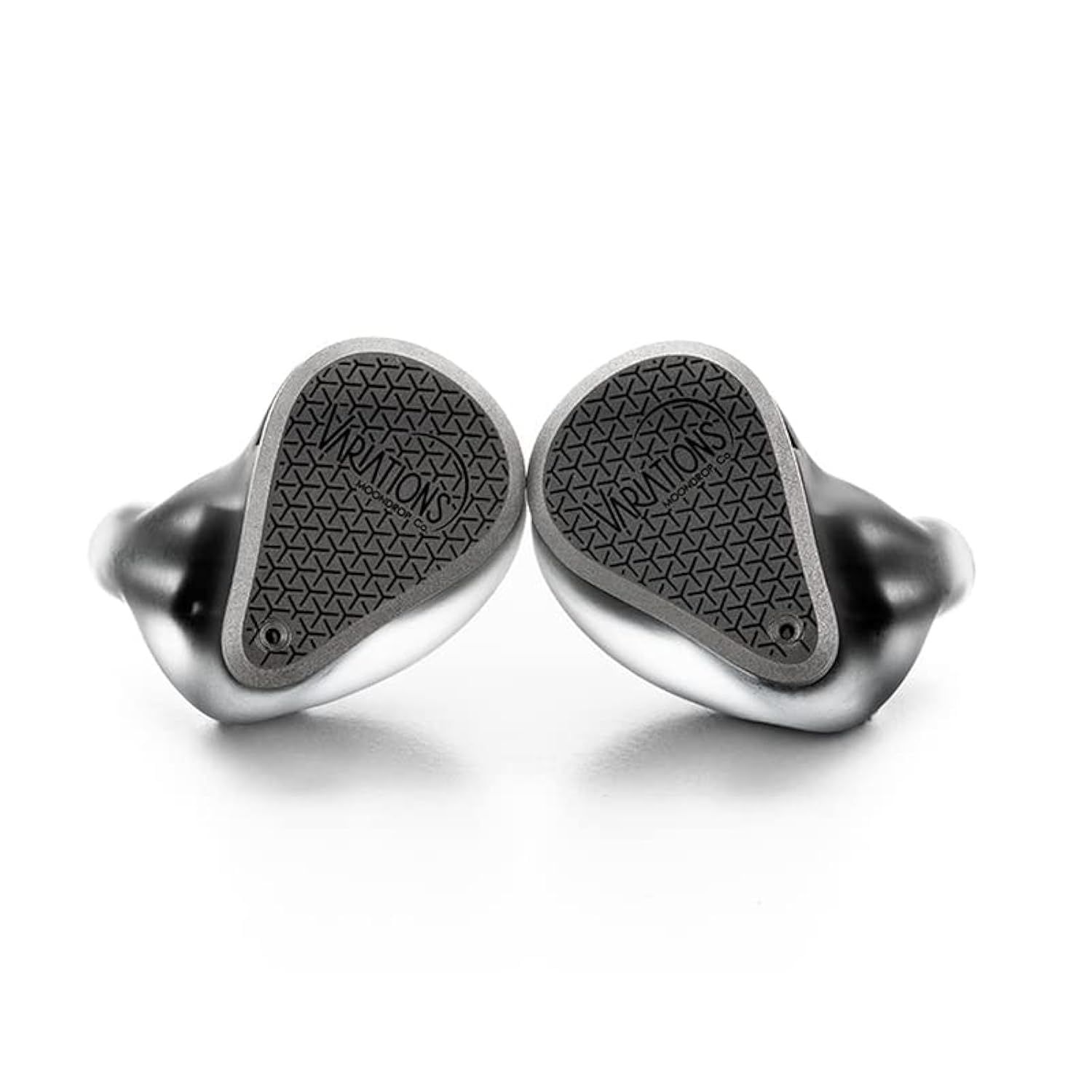Daybreakvs.Variations
Sound & Specs Comparison
Information
Both IEMs are widely regarded in the audiophile community. See how they differ in terms of sub-bass response, upper mids, clarity, and overall tonality. Spider charts and rating breakdowns included.
Objective Comparison
Facts, details, stuff.
| General Info | Daybreak | Variations |
|---|---|---|
| Brand | CrinEar | Moondrop |
| Country | – | China |
| IEM Description | – | Moondrop Variations is a hybrid in-ear monitor combining electrostatic, balanced armature, and dynamic drivers for a precise and immersive listening experience. Known for its balanced, reference-style tuning with tight bass, clean mids, and extended treble, it’s a favorite among audiophiles who crave clarity and technical performance. Ideal for detail lovers and those seeking a high-fidelity sound signature. |
| Price Level | 100 – 500 | 500 – 1.000 |
| Housing & Driver | ||
|---|---|---|
| Driver Config | – | Tribrid |
| Driver Types | – | Dynamic Driver + Balanced Armature + Electrostatic |
| Shell Material | Fully Filled Resin, Aluminium Nozzle | Copper |
| Cable | – | – |
| Technical | ||
|---|---|---|
| Freq Range | – | 9-40,000 Hz |
| Impedance (Ω) | – | – |
| Sensitivity (dB) | – | – |
| Crossover | – | – |
| Platform Info | ||
|---|---|---|
| Comments | 0 | 1 |
| Visit Count | 135 | 81 |
| External Reviews | 0 | 3 |
Meta Ratings
For comfort fit, Variations performs softly better (7 vs 6.5). From the connector housings to the shell seams, Daybreak demonstrates faintly tighter tolerances and higher production standards.
| Daybreak | Variations | |
|---|---|---|
| Sound | 6.5 | 6.5 |
| Comfort Fit | 6.5 | 7.0 |
| Build Quality | 7.0 | 6.5 |
| Stock Cable | – | 5.5 |
| Accessories | 6.0 | 6.0 |
Sound Characteristics
Low-frequency extension on Variations feels a more natural and authoritative, while Daybreak lacks some reach (6.5 vs 5.5). The low-end on It is b more controlled and rhythmic, offering better definition than Daybreak (6.5 vs 6). The bass in It feels a more physical and textured, with improved rumble and body compared to Daybreak (8.5 vs 6). It achieves m better warmth and coherence in the lower mids, bringing more realism to guitars and cellos (7.5 vs 6). It strikes a a better balance between presence and smoothness in the upper mids compared to Daybreak (8 vs 6.5). The treble on It is a more nuanced and refined, especially when it comes to cymbals and ambient elements (7.5 vs 6.5). The highest frequencies on It feel a more natural and less rolled-off compared to Daybreak (8 vs 7). The stereo field on It feels a wider and more holographic, whereas Daybreak sounds more intimate (7.5 vs 6). With s higher resolution, It allows finer textures and room ambiance to shine more than Daybreak (8 vs 6). Track elements feel a more isolated and clean on It, offering clearer focus than Daybreak (7 vs 6.5). Instruments remain intelligible on It even during busy sections, showing b better handling of masking than Daybreak (7 vs 6.5). Notes on It feel m more grounded and weighty, whereas Daybreak can sound thin or hollow (8 vs 6). It delivers dynamic shifts with c greater impact, making Daybreak sound comparatively tame (8.5 vs 5.5). It handles sibilant sounds m more gently, with fewer peaks and less sharpness than Daybreak (9 vs 6). It renders timbres with a better harmonic balance, preserving the character of instruments more accurately than Daybreak (7.5 vs 5). Across the frequency range, It stays m more consistent in tonal balance, resulting in a smoother listen than Daybreak (7 vs 5.5). Subtle ridges and granularity are conveyed m more clearly on It, adding life that Daybreak doesn’t quite match (7.5 vs 5).
| Daybreak | Variations | |
|---|---|---|
| Sub Bass | 5.5 | 6.5 |
| Bass | 6.0 | 6.5 |
| Bass Feel | 6.0 | 8.5 |
| Lower Mids | 6.0 | 7.5 |
| Upper Mids | 6.5 | 8.0 |
| Lower Treble | 6.5 | 7.5 |
| Upper Treble | 7.0 | 8.0 |
| Sound Stage Width | 6.0 | 7.5 |
| Detail | 6.0 | 8.0 |
| Layering | 6.5 | 7.0 |
| Masking | 6.5 | 7.0 |
| Note Weight | 6.0 | 8.0 |
| Slam | 5.5 | 8.5 |
| Sibilance | 6.0 | 9.0 |
| Timbre Color | 5.0 | 7.5 |
| Tonality | 5.5 | 7.0 |
| Texture | 5.0 | 7.5 |
Tonal Signature
// Nothing to compare yet.

